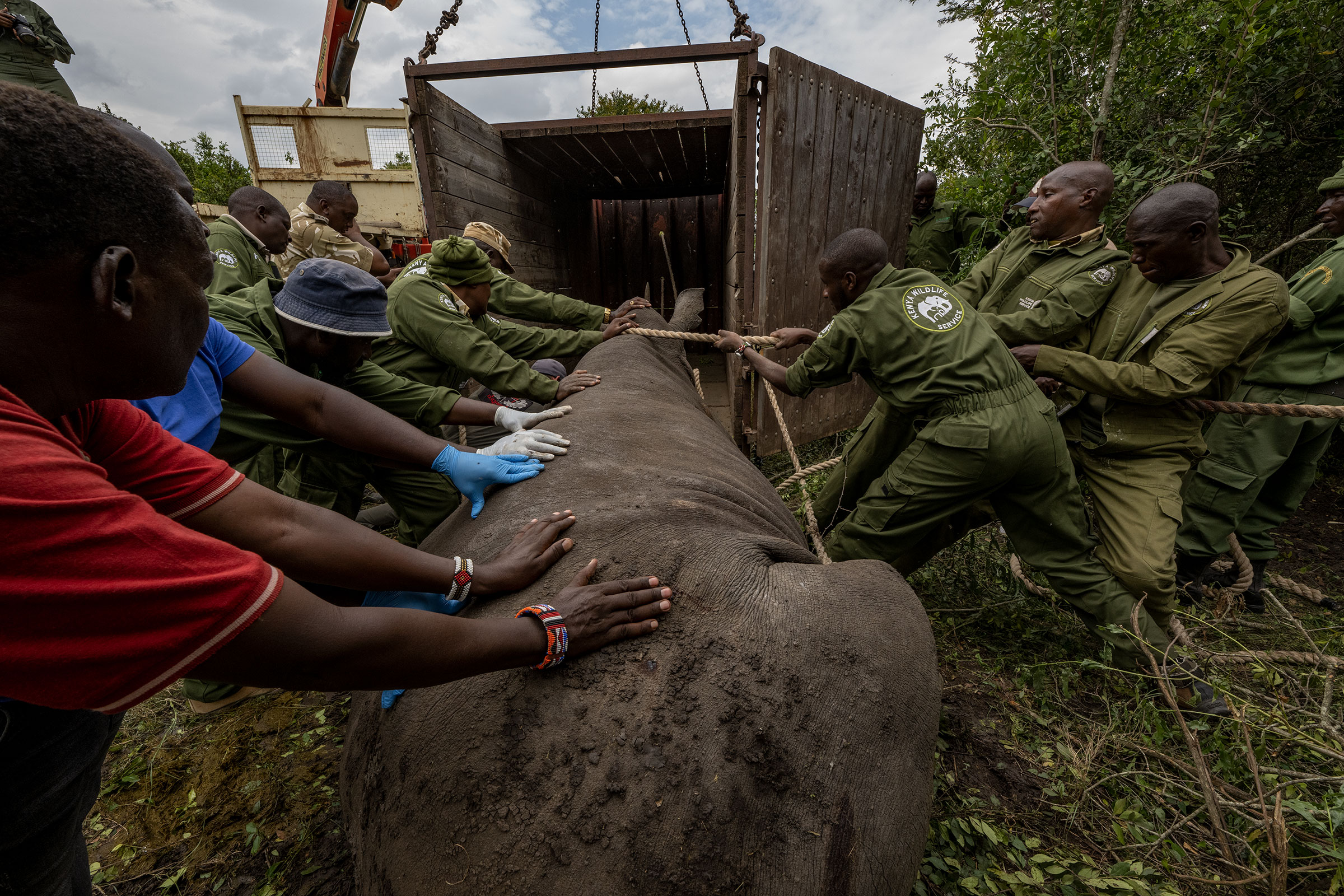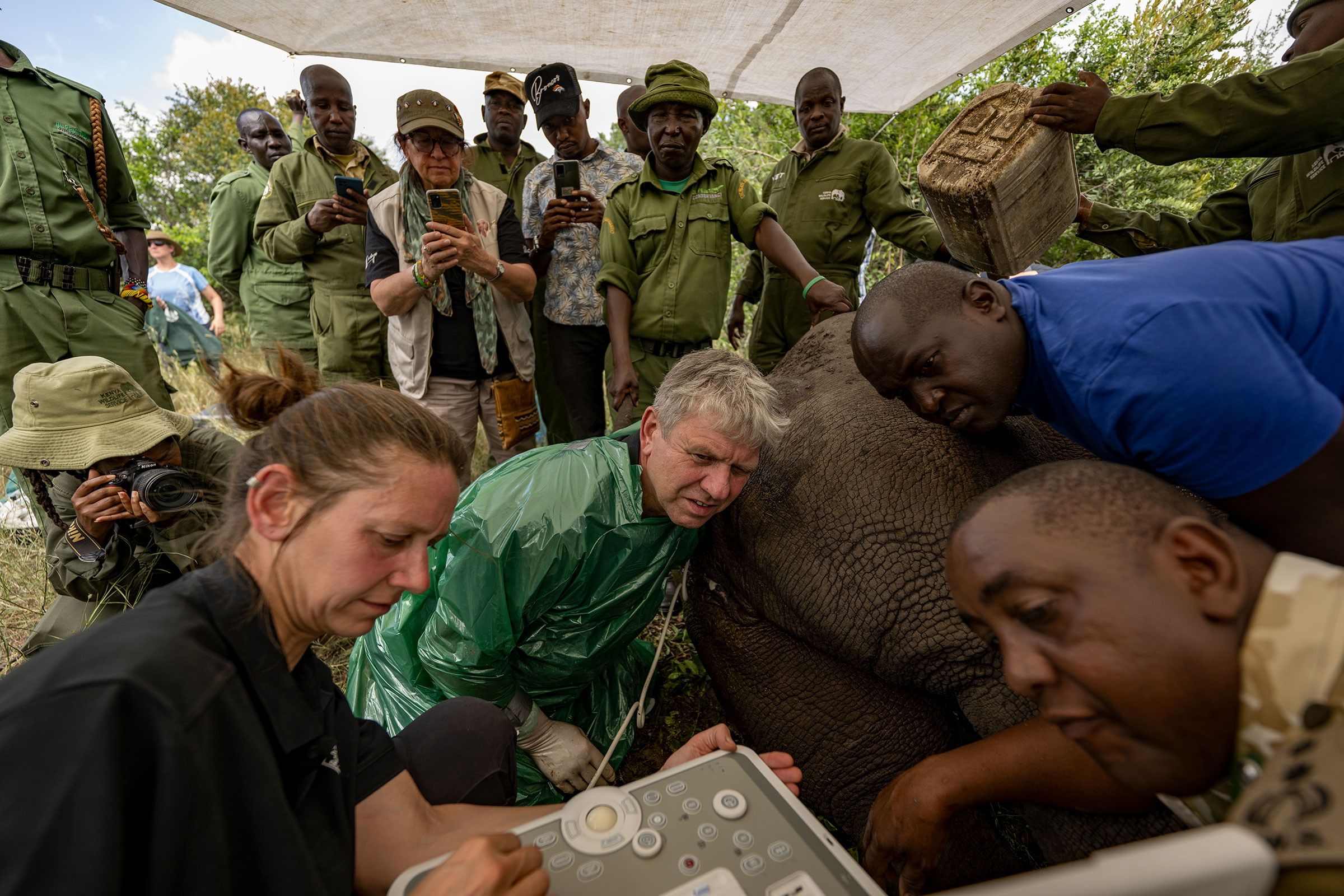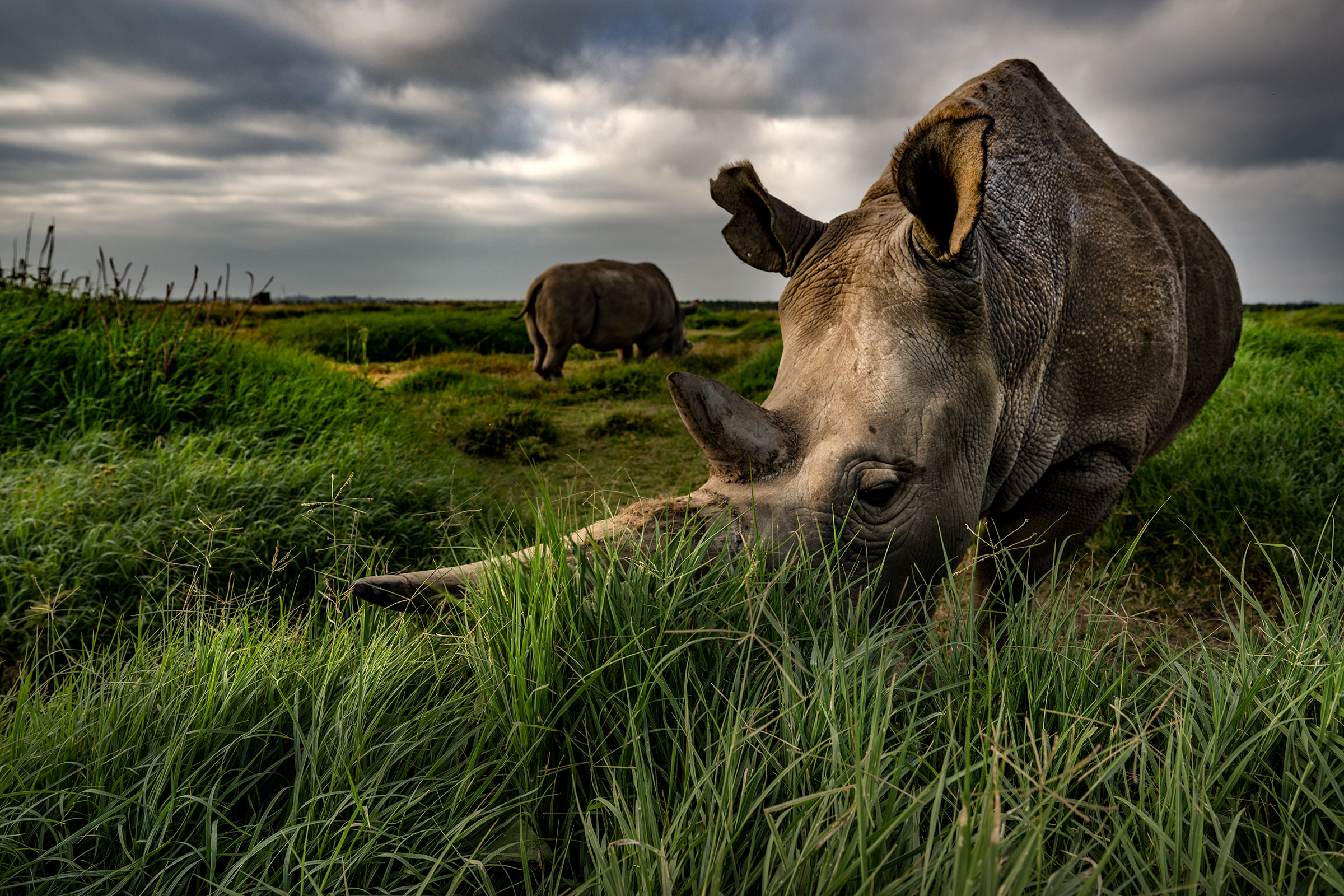The two loneliest rhinos in the world are the female known as Najin and her daughter, known as Fatu. They live in the Ol Pejeta conservancy, a 360 sq km (140 sq mi.) sanctuary in central Kenya. A lot of different animals representing a lot of different species call Ol Pejeta home, but Najin and Fatu are special: they are the world’s last remaining northern white rhinos, a species that once numbered 25,000 and ranged across what is now South Sudan, Uganda, the Democratic Republic of Congo, and the Central African Republic. The near-death of the species is mostly due to poaching—with humans hunting down the rhinos in order to remove and sell their horns.
But Najin and Fatu may soon have company—if not in Ol Pejeta then in the Leibniz Institute for Zoo and Wildlife Research in Berlin, Germany. As the institute just announced, a group of researchers led by BioRescue, an international consortium of scientists and conservationists, has, for the first time, succeeded in transplanting a rhinoceros embryo fertilized in the lab into the womb of an adult female. This breakthrough implantation, say the researchers, will not be the last; if the methods they used to achieve the reproductive feat bear themselves out, the northern white rhino, now barely clinging to existence, could rebound across sanctuaries and perhaps even parts of the wild.
“The embryo transfer technique is well established for humans and domesticated animals such as horses and cows,” said Thomas Hildebrandt, head of both BioRescue and the department of reproductive management at the Leibniz Institute, in a statement. “But for rhinos it has been completely uncharted territory. It took many years to get it right and we are overwhelmed that this technique works perfectly.”

The in vitro northern white rhino fertilization in fact did not involve a northern white rhino at all. Since 2019, BioRescue has produced 29 northern white rhino embryos, made of Fatu’s harvested eggs and the preserved sperm of four deceased males. The embryos are cryopreserved at -196°C (-314°F) in labs in Berlin and Cremona, Italy. Such a small store of embryos is a precious genetic treasure, and the BioRerscue team dared not risk squandering even one on an experiment that might not succeed. Instead, they worked with three southern white rhinos—close cousins to the northern species.
Read more: The Endangered Species Act Has Been a Success for 50 Years. Its Work Is Just Beginning
First, the researchers harvested eggs from Elinore, a female southern white rhino living at the Pairi Daiza Zoo in Belgium. They then collected sperm from a male known as Athos, at the Salzburg Zoo in Hellbrunn, Austria. Next, the eggs were fertilized using a technique known as intracytoplasmic sperm injection (ICSI), which, as the name suggests, involves injecting the sperm into the egg using a microscopic needle. Finally, they transferred two of the embryos into a surrogate mother—a southern white female named Curra, living at Ol Pejeta.

But that step wasn’t so easy. Before Curra could be implanted with the embryo, a so-called teaser bull—a male southern white rhino named Ouwan, always at the ready to breed—had to be introduced to her enclosure to detect if she was in heat. Scientists can’t determine if a female rhino’s system is primed for mating, but males, sensitive to reproductive pheromones, can. Ouwan had to be prepped for this job through a sterilization procedure in which his epididymis, or sperm-carrying tubules, were sealed by microwave ablation. Had Ouwan been left fertile it would have been impossible to know if he was responsible for any embryo in the surrogate’s womb or if the implantation was.
The next step was to perform that implantation—a procedure that also presented challenges. “The cervix of the female rhino is convoluted and impossible to pass,” says Hildebrandt. “If you try to pass it you will produce a lot of the [hormone-like lipid] prostaglandin, leading to a contraction of the uterus.” That, in turn, would cause the female to expel the embryo. Instead, researchers had to enter the female through the rectum and use a needle to penetrate the wall to the womb.
Read more: Biodiversity Is Nearing an ‘Extinction Crisis,’ Animal Researchers Say
On Sept. 24, 2023, they successfully executed the implantation on an anesthetized Curra. The next step was—or ought to have been—waiting the 16-month gestation period before Curra would give birth. But that was not to be. On Nov. 22, 2023, Ouwan died, and on Nov. 25 Curra followed. Both were claimed by sudden rainfall and flooding, which unearthed preserved Clostridia bacteria spores, infecting and killing the animals. The rhinos, tragically, were lost, but the experiment wasn’t. An autopsy of Curra found that she had been carrying a viable 70-day old, 6.4 cm (2.5 in) male embryo in her womb.

“It’s a miracle, this little baby,” says Hildebrandt. “Unfortunately humans were responsible for losing it, because climate change produced so much rain that we had mudslides; those released the 100-year-old bacteria.”
Human depredations and the loss of the embryo notwithstanding, Hildebrandt and the rest of the BioRescue team are looking forward to other miracles. Before the end of the year, they plan to implant northern white rhino embryos into two southern white rhino surrogates named Armited and Daly. If viable babies are produced, more such implantations will be conducted—likely not restoring the northern white rhino species to full, wild viability, but at least giving it a toehold on survival.
“Advanced science,” says Hildebrandt, “can help create a population that can be introduced and start reproducing itself. It’s a blueprint for restoring ecosystems.”
More Must-Reads From TIME
- The 100 Most Influential People of 2024
- Coco Gauff Is Playing for Herself Now
- Scenes From Pro-Palestinian Encampments Across U.S. Universities
- 6 Compliments That Land Every Time
- If You're Dating Right Now , You're Brave: Column
- The AI That Could Heal a Divided Internet
- Fallout Is a Brilliant Model for the Future of Video Game Adaptations
- Want Weekly Recs on What to Watch, Read, and More? Sign Up for Worth Your Time
Write to Jeffrey Kluger at jeffrey.kluger@time.com
